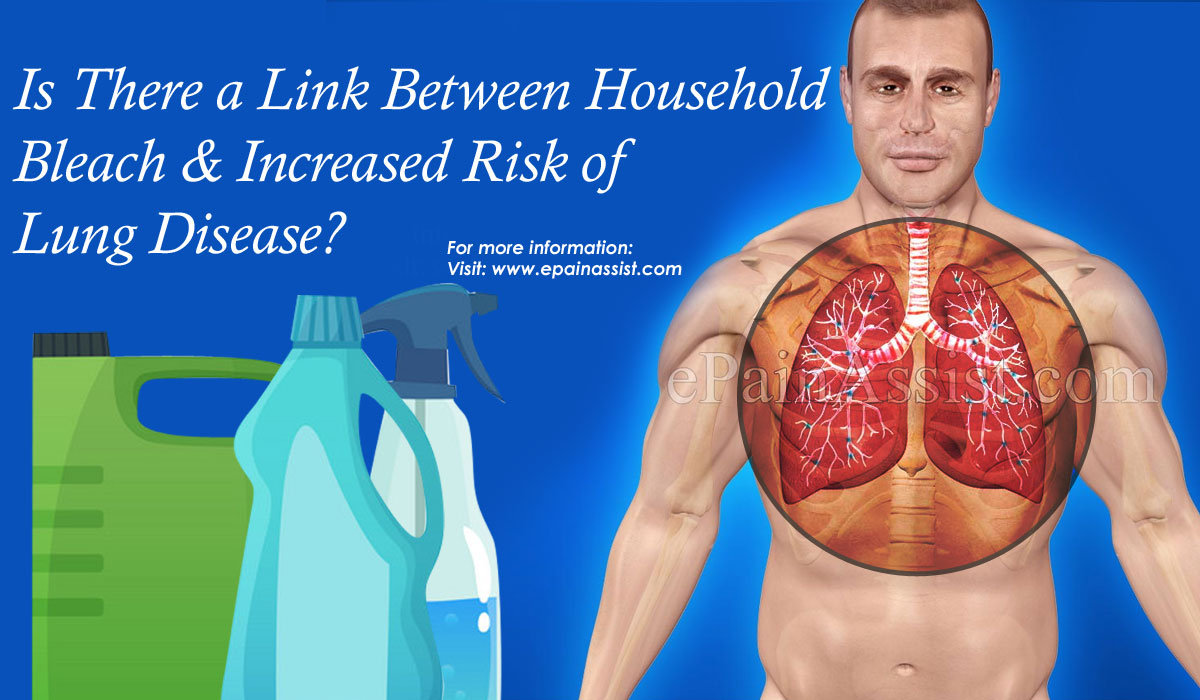Chronic Obstructive Pulmonary Disease or COPD refers to a collection of lung disorders which cause inflammation of the airways and make them narrow which makes it difficult for the individual to breathe. This condition does not have a cure and treatments are mainly aimed at controlling the symptoms. A latest research has identified that household cleaning products like bleach and other disinfectants have the ability to increase the risk for various lung diseases including COPD. This has been concluded after a study done on about 50,000 nurses who were exposed to bleach and other cleaning products.[1]
Another study done by scientists at the Harvard University in collaborations with national Institute of Health and Medical Research found out that using cleaning products and disinfectants only once a week increased the risk for lung disorders by as much as 30% which is significantly high. Studies conducted in the United Kingdom on the prevalence of lung disorders claim that approximately 35,000 people succumb to various forms of lung disorders in England every year which is the highest in whole of Europe and the use of bleach and cleaning products are one of the causes.[1]
Previously, cleaning products like bleach had been associated with increased risk of asthma however the latest research suggests that these products increase the risk of the individual developing COPD as well. This is seen in people who are exposed to cleaning chemical called quaternary ammonium compounds. This article explains how household bleach increases the risk of lung diseases.[1]

Is There a Link Between Household Bleach & Increased Risk of Lung Disease?
Based on the latest data nearly 15 million people in the United States have COPD and this condition is believed to be the third highest with regard to fatalities in the United States. Smoking as of recently was believed to be the most common risk for an individual developing COPD but the Center for Disease Control states that exposure to cleaning products like household bleach also plays a crucial role in an individual developing COPD.[2]
The link between disinfectants and COPD was presented by Orianne Dumas of the French national Institute of Health and Medical Research. Previous studies have opined about the risk of developing respiratory illnesses in people who are exposed to household disinfectants which was twice when compared to people who were not exposed. Another study zeroes down the risk of respiratory illness to specifically COPD in young adults who used bleach and disinfectants.[2]
Despite this convincing link, not much attention has been paid to the adverse effects of household cleaners to the overall health of an individual. Ms. Dumas states that she and her team were the first ones to highlight this risk and stresses on the need for increased awareness among healthcare workers and the use of certain chemicals in the making of disinfectants. The study done on 50,000 nurses in the United States on the risk of lung disorders due to exposure to cleaning products is one of the largest study done on this topic, especially in females.[2]
In the study, the scientists enrolled nurses who had no previous history of diagnosis of COPD and were exposed to disinfectants and household bleach and studies them for a period of eight years. During the study, a close assessment was made on their exposure to cleaning products and a detailed questionnaire was filled out by the participants. The chemicals to which the participants were exposed to included glutaraldehyde a common disinfectant used to clean medical instruments, bleach, alcohol, and hydrogen peroxide. Another chemical named quaternary ammonium compounds used widely in floor and furniture cleaners and is also present in fabric softeners was also analyzed [2].
The researchers during the study found out that 37% of the nurses used cleaning products on a weekly basis and 20% used disinfectants to clean medical instruments every week. In the time frame of 8 years that the 50,000 nurses were studied, 650 of them developed COPD. To exclude other contributing factors, the researchers took into the account the history of smoking, age, weight, and ethnicity. After excluding all confounding factors, they came to a conclusion that nurses who used disinfectants and bleach on a regular basis had 20% more chances of developing COPD than those who did not. This risk increased to 30% depending on the specific chemical that they used to clean instruments or surfaces.[2]
Many of these disinfectants like bleach are used widely in cleaning household; however, its negative impact on household use is still being studied. Ms. Dumas further adds that the findings of their study provide crucial evidence of the association between household disinfectants and bleach and lung disorders like COPD. This evidence is good enough for it to be considered as an occupation risk and specific guidelines should be ensured for its use especially in healthcare settings like hospitals and clinics.[2]
However, Ms. Dumas states that the findings of the study are observational and hence causality cannot be explained. She adds on that the findings are preliminary and further research is required and is being conducted. Specifically, she suggests that research needs to be done on the risk of COPD as a result of lifetime exposure to chemicals and the role of each chemical used in disinfectants in increasing the risk of COPD needs to be analyzed.[2]
Also Read:
- Pneumoconiosis or Black Lung Disease: Symptoms, Diagnosis, Treatment, Prevention, Who is at Risk
- Chronic Obstructive Lung Disease or Chronic Obstructive Airway Disease
- Occupational Lung Disease: Causes, Symptoms, Treatment, Prevention
- What Are The Lifestyle Changes For Interstitial Lung Disease?
- Is Interstitial Lung Disease Cancer?
- Is Interstitial Lung Disease The Same As COPD?
- Are There Any Home Remedies For Interstitial Lung Disease?
